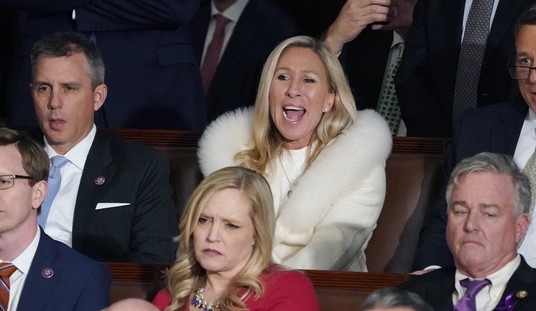Recently I wrote about my visit to the doctor’s office, in which I found out the total cash price for $740 worth of blood tests was only $62.
Which was a surprise.
Of course, the ongoing health care “crisis” — can it really be a crisis when it’s been going on for at least twenty years? — is a topic of constant debate, and constant attempts by governments to solve the crisis, which somehow never goes away. In that, it’s very much like Lyndon Johnson’s War on Poverty — after 50 years and trillions of dollars, it seems poverty is still winning.
Let’s consider a radical idea. Perhaps the health care crisis is not being solved by government attempts to solve it; maybe the government is instead the cause of the healthcare crisis?
Use my recent experience as an example. Now, for those of you who didn’t read that column, the basic point was that I went to the doctor, and thanks to the combination of intermittent freelance employment and the rampant destruction of a rational health care market wrought by the Affordable [sic] Care Act, I don’t currently have health insurance. So I’d been resisting the need to see the doctor because of what I expected the visit to cost.
Much to my surprise, the cash price for the tests I needed was only $62, as I mentioned. This was only surprising because I was used to seeing Explanation of Benefits forms when I had insurance that listed much higher prices.
Now, on second consideration, the $62 price seemed pretty reasonable, not just in the sense of being inexpensive but in the sense that it stood to reason. Most of these tests are carried out now by completely or nearly completely automated test machinery. Actually drawing the blood cost $5, and the tests each cost between $10 and $20. So, you figure the test instruments are expensive, but they’re being amortized across thousands of tests, and without resorting to actual, you know, research, that $10-$20 neighborhood for a minute or two of an expensive machine’s time seemed pretty plausible.
That’s the point at which I got curious: why would the “insurance price” be a 1200 percent — yes, twelve times — markup?
I asked some of my insurance sources, and the general agreement was that it was administrative costs of one sort or another. I also had several commenters mention that their Explanation of Benefits forms showed that the insurance companies then paid at a significant discount from the listed insurance price, and sometimes that left the patient with a pretty significant co-pay. (I plan to investigate this more: I’m suspicious that the amounts I would have paid as the co-pay on the insurance price were, at least sometimes, more than the full cash price.)
The net result, though, appears to be that the insurance companies are paying at a discount to massively inflated prices negotiated by teams of doctors, lawyers, and accountants; the doctors, labs, and hospitals are inflating their prices to pay for the administrative costs of dealing with the insurance companies’ doctors, lawyers, and accountants; and suddenly millions or billions or even trillions of dollars are being consumed by things that don’t actually have anything to do with doctors treating patients’ problems.
How did this happen? I’m sure it’s a topic of lengthy debate and many more articles, but here’s what I think in a short summarized form: immediately after World War II, when wage and price controls were still in effect, the economy was starting its postwar boom, and Harry Truman wanted the U.S. to adopt a more European system of socialized medicine. The solution the government came up with was to make health insurance deductible — to corporations. That way, companies could offer tax-deductible benefits to employees, and compete when it wasn’t legal for them to raise wages; then these employees would get “free” health insurance.
There was a hidden downside, though — it meant that the people getting the health care were no longer paying for it directly. People who get free stuff tend to get more of it, and collective bargaining agreements tended to promise more and more free stuff. Expenses started to rise, and the insurance companies started to implement processes to hold down their costs, which meant negotiating with providers to lower their prices.
Now, this isn’t necessarily bad: the insurance companies were buying healthcare in bulk, and it makes sense they would negotiate for a better price. But as the health insurance model expanded, insurance companies were increasingly near monopsonies: the insurance companies were becoming the only buyers of health care.
But doctors were also, collectively, a monopoly: they were by law the only providers of health care. So they started negotiating back, for higher prices. So doctors raised their prices, and negotiated down with the insurance companies; insurance companies responded by increasing the effort to make sure doctors weren’t gaming the system and to be sure they weren’t paying for unnecessary care; and the insurance companies’ real customers, the businesses buying insurance for their employees, paid higher prices, but with pre-tax money. The actual health-care recipients, who in an undistorted market would be the doctors’ customers, were very nearly out of the loop.
Pretty much every health care “reform” actually made things worse: Medicare and Medicaid made the government the biggest near-monopsony of all, the Affordable Care Act forced insurance companies to pay for day-to-day care (which means whatever it is, it ain’t insurance, not anymore, and basically just increases administrative costs).
Finally, it bureaucratizes the whole process. As early as the 1960s, Dr. Max Gammon observed, in the context of the British National Health Service, what became known as Gammon’s Law: in a bureaucratic system, an increase in funding is inevitably matched by a decrease in productivity.
All of these deserve articles in themselves, but that’s enough. The point is that all of the government’s interference in health care has increased costs, and worse, decoupled cost increases from the benefits to the actual health care recipients, who are no longer the customers but simply more or less passive participants in a negotiation among the doctors, the insurance companies, and the federal and state governments.
If we want an actual solution to the health care crisis, that solution needs to address the real reason health care is so expensive. My experience with paying cash demonstrated that in fact, normal basic health care isn’t terribly expensive — until it passes through the bureaucratic systems of insurance payouts and government regulation.
So let’s change that.
The original notion of making health care costs not be taxable isn’t necessarily a bad one, and in any case, it’s pretty firmly embedded in our system now. In fact, in previous attempts at reform, Flexible Spending Accounts (FSAs) were introduced, which let you deduct money before taxes for health care expenses. So let’s expand the FSA program. Make FSBs a kind of bank account with a debit card, and let people put as much money into it as they want, with two conditions: they can only use the funds for medical expenses — defined broadly, let’s go back to letting people buy over the counter drugs, medical devices, pay for chiropractic care, and so on — and at retirement, the funds can be rolled over into some kind of retirement account. Or, possibly, treat excess funds at the end of the year as a contribution to an IRA account.
Second, get insurance companies out of the business of paying doctors directly for care, without having the patient in the loop. The mechanics could be made infinitely complicated — doctors and hospitals would have to have some way to be sure they would get paid — but there’s a fairly simple method to handle it: simply make the checks out to the doctors, but require the patient to countersign the check, so they always see exactly what the doctors and providers are actually getting paid.
Third, make health insurance back into real insurance again. No required coverage and no “insuring” normal health care. If insurance companies want to be in that business, let them administer FSAs in competition with banks. Then the insurance companies could go back to offering “major medical” and “catastrophic care” insurance, with coverages that actually are based on paying for improbable, extremely expensive events.
Finally, encourage “concierge doc” plans — arrangements where you pay your doctor a monthly retainer and the doctor agrees to provide a particular level of service. This is becoming increasingly popular, but doctors can’t afford to pay the administrative costs of dealing with insurance companies. But if you could pay using the FSA instead, there would be no reason to involve an insurance company at all.
Taking these steps would let health care go back to being a consumer good, and take out the additional administrative costs that drive up the prices so massively. Get the government and the insurance companies out of the process, and let people get, and pay for, their own health care at reasonable prices.










Join the conversation as a VIP Member